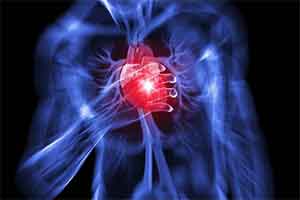European standards to prevent repeat heart attacks launched

 European standards to prevent repeat heart attacks are published in the European Journal of Preventive Cardiology.1 The standards were defined by the European Society of Cardiology (ESC).2
European standards to prevent repeat heart attacks are published in the European Journal of Preventive Cardiology.1 The standards were defined by the European Society of Cardiology (ESC).2
“Cardiovascular disease (CVD) is the world’s number one killer, accounting for one in five deaths in Europe,” said lead author Professor Massimo F. Piepoli. “The biggest consequence of CVD is myocardial infarction.”
He continued: “One in five people who survive a heart attack have a second cardiovascular event in the first year – even when receiving optimal treatment and care. The people behind these numbers spurred this call for action to reduce the risk.”
The consensus document outlines the steps patients and healthcare professionals can take to prevent recurrent heart attacks. “A heart healthy lifestyle is the most effective way to avoid another heart attack,” said ESC prevention spokesperson Professor Joep Perk. “This should be supported with good medical treatment and follow up.”
Steps to prevent repeat heart attack:
1. Quit smoking
2. Do regular physical activity
3. Eat healthy food
4. Take prescribed medication to protect coronary vessels, and to control risk factors such as high blood pressure and cholesterol
“Stopping smoking beats everything for preventing heart attacks,” said Professor Perk. “Combine that with exercise and a healthy diet and we could avoid 80% of all myocardial infarctions.”
According to the EUROASPIRE survey, after an acute myocardial infarction 16% of patients smoke, 38% are obese and 60% report little or no physical activity.3 Only half of patients are advised to participate in a cardiac rehabilitation programme, of whom just 80% actually attend. European guidelines on CVD prevention outline blood pressure and cholesterol targets but these are still missed.4
“Having a heart attack is an upsetting experience but it does not seem to motivate patients to adopt a healthy lifestyle to avoid having another one,” said Professor Piepoli. “We also know that more than half of heart attack patients stop taking their preventive medications.”
“Patients are almost blinded by the excellent results of stents to clear blocked arteries,” said Professor Perk. “There is an over-belief in what medical care can provide and patients feel they don’t have to do anything. The challenge is to convince patients that the best way to prevent another heart attack is to take responsibility for their own health. Many lives could be saved – there is too much to lose by not doing it.”
Prevention of recurrent heart attacks should begin immediately after the first event, while patients are still in hospital. This should be given equal priority to treating the initial heart attack. Patients should be referred to an outpatient cardiac rehabilitation to reinforce lifestyle messages and encourage adherence to behaviour change and medications.
Professor Piepoli said: “Acute cardiovascular care specialists are responsible for identifying risk factors (smoking, inactivity, poor diet) and teaching patients how to improve their lifestyle habits. This can be supported by prescribing medicines for high blood pressure and cholesterol. Failure to start prevention as early as possible may give the erroneous impression that it is less important than the cure.”
He concluded: “We have scientifically proven ways to prevent second heart attacks. But we need to empower patients to better understand their risk factors after myocardial infarction and take a central role in their recovery. Cardiologists, nurses and allied professionals all have a role to play in prevention, starting in the acute phase through to follow up care after hospital discharge.”
References:
1 Piepoli MF, Corrà U, Dendale P, et al. Challenges in secondary prevention after acute myocardial infarction: A call for action. European Journal of Preventive Cardiology. 2016.
2 The document was developed by the ESC’s European Association for Cardiovascular Prevention and Rehabilitation (EACPR), Acute Cardiac Care Association (ACCA), and Council on Cardiovascular Nursing and Allied Professions (CCNAP).
3 Kotseva K, Wood D, De Bacquer D, et al; EUROASPIRE Investigators. EUROASPIRE IV: A European Society of Cardiology survey on the lifestyle, risk factor and therapeutic management of coronary patients from 24 European countries. European Journal of Preventive Cardiology. 2016;23:636–648.
4 2016 European Guidelines on cardiovascular disease prevention in clinical practice. European Heart Journal. 2016;37(29):2315–2381.
Source: European Society of Cardiology (ESC)
Full bibliographic information:
Piepoli MF, Corrà U, Dendale P, et al. Challenges in secondary prevention after acute myocardial infarction: A call for action. European Journal of Preventive Cardiology. 2016.




